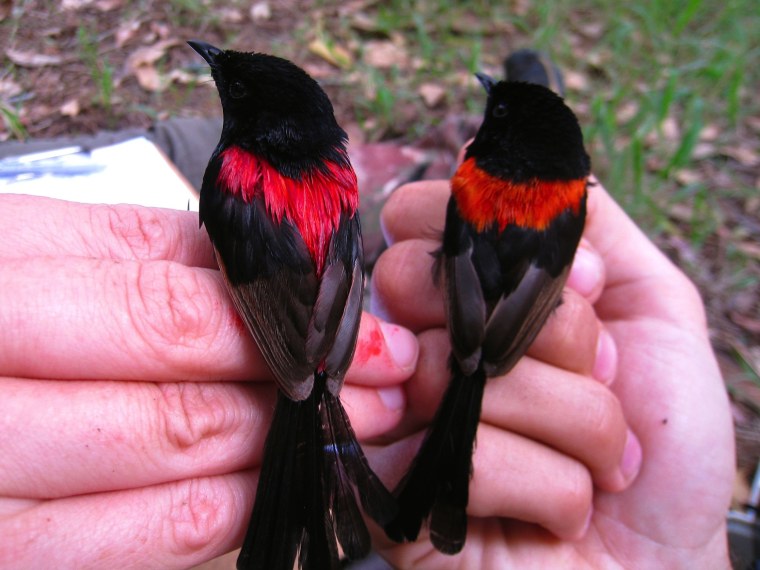Out in the Australian scrubland, scientists are using Sharpies to trick promiscuous female fairy-wrens from mating outside their subspecies, an "extra-marital" behavior that may be stalling evolution in its tracks.
Two groups of fairy-wrens live in Northeastern Australia: You can tells the males apart easily — one group has an orange band of feathers on their backs and the others are crimson red.
Females find partners within their subspecies — orange to orange and red to red — to nest and raise their brood with. But they also seek out other mates, aside from their "social" fathers-to-be, and that's when they look for a bit of variety, Daniel Baldassarre and Michael Webster, ornithologists at Cornell University have found: They recorded how female birds from the orange group had a clear preference for red males outside their main relationships.
Over two breeding seasons, the birders tracked 39 male fairy-wrens. They painted the feathers of one group of 13 red, coated another 13 in clear marker, tracked how the remaining 13 did with their natural orange back.
It turned out that just a coat of Sharpie-like coloring was enough to fool the females — orange-backed males with the PrismaColor Carmine Red dye job fathered twice more offspring than naturally orange males who lived in the same area, Baldassarre and Webster found. Also, the redback males only attracted female birds that were cheating on their primary mate, they explain in the Wednesday issue of the Proceedings of the Royal Society B.
Was the red color irresistible to the females? Were they curious because it was new? "We don't know that," Webster told NBC News, that's something they're exploring in studies this year.
Webster says the orange and red subspecies of fairy-wren are in the process of diverging into two distinct species — something we know birds and mammals and reptiles do naturally over time, ever since Darwin observed his various species of finches on the Galapagos Islands.
When the orange-back females mate outside their species, they mix genetic material, stalling the usual course of divergent evolution.
For the Aussie fairy-wrens, this roadblock isn't a big deal in itself. (And, the researchers won't be trying to alter the birds' behavior, chasing after orange birds with a red Sharpie any time soon.)
But this behavior does suggest that other related species of birds, mammals and reptiles that are being brought closer because of human factors could be "melding together into one species," Webster said.
Daniel Baldassarre and Michael Webster are authors of "Experimental evidence that extra-pair mating drives asymmetrical introgression of a sexual trait."
Nidhi Subbaraman writes about science and technology. You can follow her on Facebook, Twitter and Google+.
